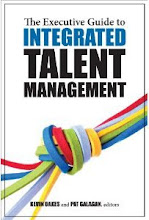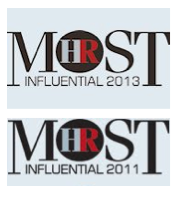 One management innovation I’ve suggested, my own version of a rumspringa, is what I call a career partnership. This is an approach that could apply to those people whose own human capital forms a major input to organisation capability.
One management innovation I’ve suggested, my own version of a rumspringa, is what I call a career partnership. This is an approach that could apply to those people whose own human capital forms a major input to organisation capability.
Of course, these talented people are not only ever going to work for this one organisation, but there might be a basis for a new type of relationship with them.
An HRM / adding value approach to talent management suggests that an organisation should employ people who fit within its various talent pools for as long as possible. The organisation knows these people will leave in a few years time and it tries to guard against them doing this as much as it can. This often seems to involve keeping people identified as talent as busy as possible, so that they do not have time to apply for other jobs!
An HCM / creating value perspective to talent management also recognizes that these individuals are going to want to leave at some point, if only to gain more variety in their careers. However, rather than fighting for a few more months or years of service before these people leave, the organisation looks longer term and effectively says, ‘Look, we know you are not going to work for us for the next ten years. But we’d very much like it if you would work for us for ten years during the next twenty. We’d like you to partner with us during this time. During some of this period you will be employed by us and at other times you won’t. But we’re going to keep a special relationship going with you throughout.’
The focus of this approach is on maximizing the lifetime value (not the length of a single employment contract) of people in the partner group. An analogy using customer rather than human capital is relationship marketing’s focus on maximising a customer’s lifetime spend (rather than the revenue from an individual transaction).
An organisation needs to focus on engaging all its career partners, not just those partners that are in employment at any one point in time. This means that organisations actually have to maintain two partner groups: an internal group and an external one. The external group consists of people who have previously worked in the organisation’s internal partner group, or have been invited to join the external partner group for later employment when the time is right for both parties.
In this way, an organisation’s relationship with its career partners changes from being a single transaction to an ongoing cycle, in which the individuals move out of and back into employment, potentially several times...





























> ‘Look, we know you are not going to work for us for the next ten years. But we’d very much like it if you would work for us for ten years during the next twenty. We’d like you to partner with us during this time. During some of this period you will be employed by us and at other times you won’t. But we’re going to keep a special relationship going with you throughout.’
ReplyDeleteIsn't this called Business Development 101 trademarked by McKinsey???
;-)
Jon,
ReplyDeleteThis is extremely innovative thinking. Would it not encourage people to move on in search of pastures new 'safe' in the knowledge that they had somewhere to return to?
Thanks both.
ReplyDeleteCareer partnership certinly builds on approaches used by many organisations, including McKinsey, Bain (I include a case study on their approach to externships in my book), the UK Civil Service (their Faststream programme) etc.
But yes, I think its quiet 'extremely innovative' too. I'll add some more posts on the different aspects of the approach which should help make it clearer.
Jon,
ReplyDeleteI wonder what organisational life would be like if we operated on the same principles found in football - where fixed contracts were the norm, but this was combined with a vibrant loan signing marketplace. Blue-chip organisations could nurture graduate talent by 'signing up' the best, but allowing them to accelerate on-the-job leadership/management experience in SME companies
just a thought !
Hi John,
ReplyDeleteNice idea. I don't even think this would need to be the norm in order for one large organisation, plus a group of SMEs to do it, or perhaps a group of large employers in different sectors (I tried to develop this sort of arrangement in a few organisations in a previous consultancy role).
I think this would signal a clearly differentiated and superior employment proposition, and show that this organisation really is an employer of choice (where this really means something special).
Let me know if your next employer would be up for looking at it!
And thanks for the comment.